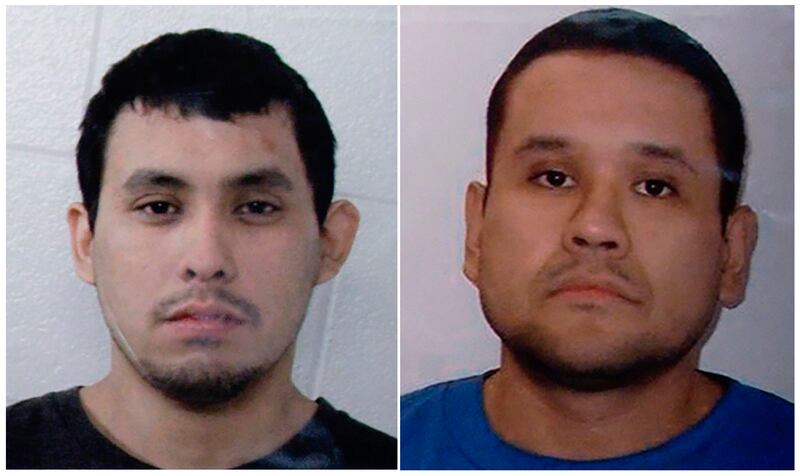Police in Canada have urged residents of an Indigenous community in Saskatchewan to find a secure location and shelter in place, after the remaining suspect in a stabbing rampage over the weekend was reportedly seen.
An emergency alert to phones warned people to shelter in place after several people in the John Smith Cree Nation reported seeing Myles Sanderson (30), who is wanted over a string of attacks that left at least 11 dead and 18 injured.
His brother, Damien (31), who was also suspected in the attack, was found dead on Monday near the sites of the attacks. Authorities say his injuries were not self-inflicted.
The prime minister, Justin Trudeau, urged residents to heed warnings from local authorities.
“We need to make sure that everyone stays safe,” he told reporters. “All Canadians stand with the people of Saskatchewan at this time.”
Since the attacks, the focus of the manhunt had been on the province’s capital of Regina, more than 300km (186 miles) south of the First Nation. Reports that Sanderson was nowhere near the city highlighted the fluid, quickly shifting nature of the investigation.
Sanderson faces murder charges for his alleged role in the stabbing spree in north-eastern Saskatchewan, that left victims spread over 13 crime scenes in John Smith Cree Nation and the nearby village of Weldon.
The attacks have stunned James Smith Cree Nation, a First Nations reserve of 3,400, where residents are grieving the deaths of beloved community members. Among them are a mother, a community first responder and a 77-year-old widower.
As residents of the northern Indigenous community struggle to make sense of the attacks, prominent figures in the region have blamed drugs and alcohol.
“Our hearts break for all those impacted. This is the destruction we face when harmful illegal drugs invade our communities,” Bobby Cameron, the chief of the Federation of Sovereign Indigenous Nations (FSIN), which represents First Nations groups in Saskatchewan, said in a statement.
Sanderson’s parole documents from February say he was subjected to abuse at a young age, began drinking at 12 and using cocaine two years later. He bounced between his father’s home in a city and his grandparents’ house on a First Nation reserve, experiencing abuse and neglect in both households, according to the documents, which were released to media outlets.
In the years that followed, Sanderson became aggressive and violent. The parole board said many of his crimes happened when he was in a state of intoxication. In meetings, Sanderson admitted drugs and alcohol would make him “lose [his] mind”.
In 2017, forced his way into an ex-girlfriend’s home and punched a hole in the bathroom door where children were hiding in a bathtub.
He threw a cement block at a woman’s car windshield, days later threatening to murder an employee at a store and then burn down his parents’ home.
Sanderson, the documents show, forced a man to rob a fast-food restaurant by hitting him in the head with a gun and stamping on him.
In 2018, Sanderson got angry with a group of people he was drinking with. He stabbed two of them with a fork and then attacked a man who was walking nearby, beating him until the man lost consciousness in a ditch. During the arrest, Sanderson repeatedly kicked an officer in the face and on the top of the head.
“You can be easily angered when drunk, but are a different person when sober,” the parole board said.
Sanderson, who was serving a four-year-and-four-month federal sentence for assault, assault with a weapon, assaulting a peace officer and robbery, was released last August.
His parole was revoked after he failed to check in with his case officer. But the parole board nonetheless reinstated his statutory release.
“It is the board’s opinion that you will not present an undue risk to society if released on statutory release, and that your release will contribute to the protection of society by facilitating your reintegration into society as a law-abiding citizen,” it said.
In its assessment of Sanderson, the parole board appeared confident he would be able to reintegrate into society after he began participating in traditional cultural ceremonies, had a demonstrated record of sobriety and had obtained consistent housing.
As part of his release, he was banned from consuming narcotics and alcohol, and was required to participate in treatment plans for substance abuse and domestic abuse.
In May, he once again failed to communicate with his parole officer and was deemed “unlawfully at large”.
Sanderson’s record shows 59 criminal convictions, with many relating to a failure to comply with court orders. Because of his violent behaviour, he has a lifetime ban on possessing a prohibited weapon.

